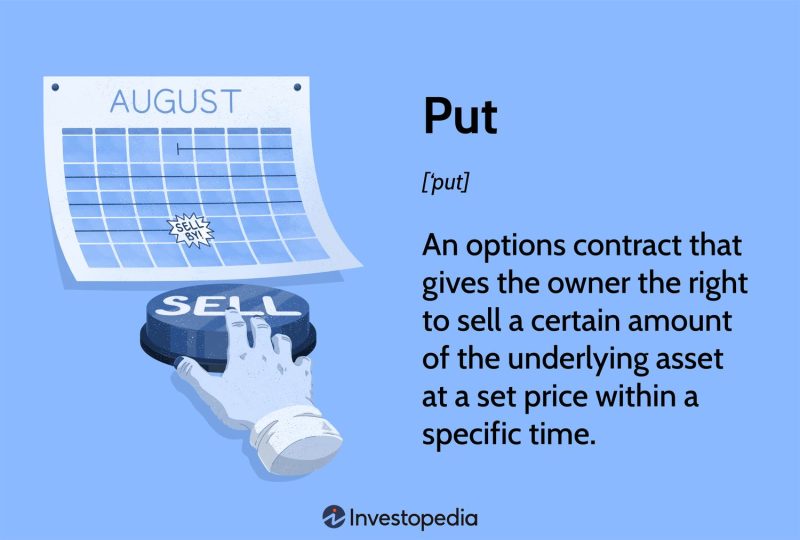Once you’ve had a little experience trading options, you might become curious about the opportunities of trading options intraday. In 2022, the Chicago Board of Options Exchange (Cboe) announced that it would issue weekly options with expiration days on each day of the week. This announcement applied to options on the S&P 500 Index (SPX), but more symbols have continued to be added as trader interest in zero days to expiration (0DTE) options has grown.
While it might sound like the kind of activity only an energy-drink company would sponsor, the reality is that 0DTE options are best suited for experienced options traders that know how to manage the massive volatility that is often associated with this type of trading. A trader who wants to pursue this strategy will also need to research the right online broker or trading platform to fit their needs. We’ve compiled the basics every 0DTE enthusiast should know, and have structured this guide for trading options to answer the questions most novice option traders have.
How to Trade 0DTE Options
Traders who want to participate in 0DTE option trading should recognize that they will be making frequent transactions. Consequently, they would benefit from a broker that has low commission costs for options, great option analysis tools, fast execution speeds, and strong education resources.
Opening an account will require that you share personal information about your identification, financial status, and trading experience. Once you’re prepared to share the necessary information, you can research the brokers with which you can open an account. Investopedia’s broker reviews can help with that. After you have selected a broker to use, and filled out the account application (this is usually done online and is fairly quick), then you can request options trading approval.
Step 1: Select a broker. Choose a reputable online broker, like Interactive Brokers or Webull, where you have access to critical options trading tools like options calculators, extensive charting tools, screeners, a demo account, strong trading technology, extensive educational materials, and a transparent fee structure.
Step 2: Register an account and complete the exchange’s customer onboarding process. Broker requirements for approving options trading in your account can vary widely. Some brokers may have a tiered level of options trading approval. Lower tiers include buying and selling options, while higher tiers include spread trading, index trading and selling uncovered options. Trading options on SPX, NDX, or XSP will require a higher level of trading authority.
Some brokers may ask you to complete a questionnaire or take an online course to demonstrate your knowledge of options trading. All such requirements are stipulated by the broker simply to manage their risk. Consequently, the higher your net worth or the larger your account, the less strict a broker is likely to be about such requirements.
Step 3: Fund your account. Once your application is processed and you are approved for options trading, you will want to fund your account with more than the minimum required amount and review and accept the language of the options agreement. If you plan to trade 0DTE options on margin, you’ll need to meet your brokerage firm’s margin requirements. This can include meeting ongoing minimum balance requirements and promptly addressing margin calls. Once these are complete, your account will be capable of trading options.
Step 4: Research option strategies. 0DTE option trading is more complex than stock trading because it requires factoring in the element of time decay and managing in a very short time frame. Some traders prefer to use option selling strategies because they can expect to win consistently on most days. The tradeoff is that some selling strategies can generate very large losses on rare occasions.
Other traders prefer to use buying strategies as a way of limiting their risk. This often limits their potential loss to the cost of the option. If the strategies provide sufficient opportunity for large gains (larger than the cost of the option), then buyers must find ways to manage their losses and balance them against anticipated gains.
Best Options Trading Platforms
| Platform | Best For | Account Minimum | Fees |
|---|---|---|---|
| tastytrade | Best Options Trading Platform | $0 | $0 stock trades, $1 to open options trades (capped at $10 per leg), $0 to close |
| Interactive Brokers | Best Broker for Advanced Options Traders | $0 | $0 commissions for equities/ETFs available on IBKR’s TWS Light, or low costs scaled by volume for active traders that want access to advanced functionality such as order routing. $0.65 per contract for options on TWS Light; that is also the base rate for TWS Pro users, with scaled rates based on volume. $0.85 per contract for futures |
| E*TRADE | Best Broker for Beginning Options Traders | $0 | $0 for stock/ETF trades. Options are $0.50-$0.65 per contract, depending on trading volume |
| Webull | Best Broker for Low-Cost Options Trading | $0 | $0 commissions for stock, ETF, options, and cryptocurrency trading (small markup is priced in) |
What You Need to Open an Options Trading Account
Before you can start trading options, you need to open an account with a brokerage firm. To do this, you’ll need to provide information that covers personal identification, such as the following:
- Name
- Address
- Social Security number
- Employment status
- Job title
These are provided for account ownership and standard banking purposes.
The broker will also ask you to provide additional information regarding the following key items:
- Financial status
- Liquid assets
- Trading experience
- Risk tolerance
- Options trading knowledge
This information is used to assess the broker’s risk of having you as a customer. It helps reduce the risk that you might make a trading mistake that could somehow spill over from your account and impact their business.
Know the Risks Associated With 0DTE Options
Expiration-day trading carries an elevated risk of losing everything a trader spent in buying the option contract, simply because the option will expire as soon as the trading session is over. For example, if a trader buys an at-the-money (ATM) call option two hours before the close, and the underlying security falls strongly with an hour left to go in the session, there is very little chance that it will rebound back to its former levels. The trader will then find their contract nearly worthless.
Another risk of trading 0DTE options applies exclusively to option sellers. This includes an increased risk of being assigned when a contract buyer exercises the option before the market closes. Such assignments are rare, but they can happen since American-style options can be exercised at any moment up until expiration.
The biggest area of risk for option buyers also happens to be the most prevalent area of opportunity for sellers: theta decay. Theta decay is a persistent, mathematical force in option pricing, and option traders have to know how they will manage it in order to be successful.
Theta Decay
Option prices are sensitive to the passage of time. The closer the day comes to expiration, the more the price of the option will decline, all other factors being equal. This loss of value that occurs over time is known as theta decay and is sometimes referred to as time decay. The amount of theta decay an option has will not only increase leading up to the day of expiration, but will also increase throughout the hours of the final day before expiration.
During the final hours before expiration, even though theta decay continues to increase, the relative influence from the underlying security’s price action begins to increase. Even a normal-sized move in the final hours before expiration can have a large impact on the change of the price–potentially bigger than the decline of time value. That’s what makes 0DTE trading so attractive to buyers.
However, most buyers simply overestimate the chances of a big move in the underlying occurring within a short window of time on expiration day. That’s why option sellers are so frequently able to generate winning trades.
What Securities Offer 0DTE Options?
All options can be traded as 0DTE options, but only a few securities offer options which expire every day. By the end of 2022, Cboe offered expiring contracts on every trading day for the following securities:
- Nasdaq 100 Index (NDX)
- S&P 500 Index (SPX)
- Mini-SPX Index (XSP)
- SPDR S&P 500 ETF Trust (SPY)
- Invesco Nasdaq 100 Trust (QQQ)
The growing popularity of these instruments may lead to more securities having daily-expiring options made available.
Factors to Consider When Opening an Options Trading Account
Customer service: This is critical for newer traders who need someone to call or chat with when they don’t understand what they see in their account. As a beginning option trader, you’ll want a broker that can be rapidly accessible and able to give quick answers on things like balance changes, margin requirements, margin call notices, or other unusual notifications. A broker representative should be available to clarify what is happening in your account regarding option trades especially on topics of expiration, assignment, and closing out spread trades.
Fees and commissions: Some brokers charge commissions on option trades, even if they don’t charge commissions on trades of stock shares. The costs of commissions and fees can vary significantly as certain brokers prefer to remove some or all commissions from the customer transaction. For those that do charge, $0.65 per contract is a typical price.
Account minimums: For stock and option trading, opening an account with a minimum deposit of several thousand dollars has become a thing of the past. Most brokers will allow customers to open an account without funding it right away.
Research and trading tools: Our comprehensive reviews show that most brokers supply fundamental, technical, and even proprietary research for traders. Online web-based brokers tend to offer a more sophisticated toolset for trading than mobile-based apps used by some of the newer brokers such as Robinhood, Webull, or eToro. Sophisticated charting tasks are more productive on a broker’s platform that runs on a PC or Mac platform. The same is true for complex order types such as conditional or branching orders.
Educational content: Highly informative articles, videos, online classes, interactive quizzes, and more are common nowadays for many brokers. The most popular broker platforms are often featured by option traders who create content on social media platforms as well. You shouldn’t have to struggle finding educational content for your trading platform, so if you do, take that as a warning flag.
Demo account: Many of the brokers reviewed include demo accounts. These allow a trader to make simulated trades based on the same platform interface they will use to make trades. This can be very helpful for traders just getting started trading options. But not all brokers provide this tool, so beginner-level traders may want to check out the Investopedia simulator if they have no tools available from their broker.
FAQs
What Are Zero Days to Expiration (0DTE) Options?
A 0DTE option can be defined as any contract that is being traded on the day it expires. The Cboe does not specifically generate option contracts that expire on the same day they are issued. Instead it issues weekly options with expiration days for each day of the week.
With the exception of contracts that expire on Friday, most of these options are issued two to three weeks before their expiration date. Options with one month or more until expiration continue to be those that expire on Fridays.
Regardless of how long ago the contract was issued, the final trading day for any option has one characteristic in common: It has the least amount of premium associated with the time before expiration. This creates the perception of opportunity for traders who perceive that they can only lose as much as the cost of the option, but imagine the option may become far more valuable than its original price.
How Do Zero Days to Expiration (0DTE) Options Work?
The lure of 0DTE options is often greater than what bears out in the markets. Traders who imagine that an option which costs comparatively little to begin with may assume that opportunities abound for that same contract to increase in price by multiples. However, all options are priced in such a way that accounts for the anticipated price fluctuation of the underlying security before the option expires. This is known as implied volatility.
Since a 0DTE option has only one day left to account for trading moves it creates a condition where traders often estimate the potential for gains. That’s because it allows them to leverage the underlying at a lower cost.
For example, a 400-strike at-the-money call option for SPY that has 60 days left for expiration might cost $10 per share (or $1,000 per contract), while the same contract on the day of expiration might cost no more than $1.50 per share (or $150 per contract). Yet both of these contracts control the same 100 shares of SPY, which would hold a notional value of $40,000. The leverage of the 0DTE option is therefore much greater.
Despite the greater leverage, option sellers charge a higher percentage of implied volatility for these options. That’s because they know that anything can happen in the markets, and they need to have prices that protect them from that risk. For this reason, some experts advocate the use of selling strategies over buying strategies when using 0DTE options.
One additional benefit for trading these options benefits both buyers and sellers alike. The day of expiration usually produces the heaviest volume of ATM option contracts. That means these options will often trade with the least amount of difference between the bid and the ask prices (the measure of transaction cost for traders).
Why Are 0DTE Options So Popular?
Trading options on the day of expiration creates several benefits that have attracted both retail and institutional traders alike. These benefits include:
- Greater leverage
- Less transaction cost
- Efficient protection against daily news events
- Higher frequency of opportunity
These benefits may not apply to all investors, but they are real enough that 0DTE trading is attracting many participants. Some reports indicate that 0DTE option trading has increased to such an extent that the impact could have dire consequences for the market. However, still others dispute that claim.
Among all the benefits of 0DTE options, perhaps the one that stands out for investors is that of being able to protect a portfolio at a moment’s notice.
Imagine being able to buy fire insurance on your house for just one month, or one weekend, or just for those three hours where you’ll be flipping burgers on your backyard patio. The extreme efficiency of paying only for protection when it is precisely needed may turn out to be a boon for large portfolio investors. The fact that savvy speculators can profit from such moments has only attracted more attention, which in turn helps the pricing of these options become more efficient.
For traders, the most attractive benefit is different. Traders that become skilled in their preferred strategies benefit from frequency of opportunity. Being able to trade 0DTE options every day of the week is a big benefit for those who have mastered a particular 0DTE strategy.
What Does 0DTE Mean?
0DTE stands for ”zero days until expiration.” It implies that the option you are trading today will functionally expire as soon as the market closes. Technically options expire the day after their last tradable day, but since there are no days left to trade before expiration, the phrase is appropriate.
What Happens If You Don’t Exercise a 0DTE Option?
You can buy or sell a 0DTE option contract right up until the market closes. As the market closes, if the option is in the money, it will be exercised automatically. If it is out of the money, then it will expire worthless.
Are 0DTE Options Risky?
Option buyers face the same risk with 0DTE options as they would with any other kind of option, but they also carry the added risk of a compressed timeframe for trading. That means they may need to spend more time observing the option price changes in real time to be certain they can respond if an unexpected price change should occur. Option sellers face the same risk, but it can create larger losses for them if prices move strongly in one direction. The compressed timeframe also means that option sellers may experience an increased risk of being assigned if a buyer chooses to exercise the option before the market closes.
How Much Money Do You Need to Trade 0DTE Options?
For practical matters, traders wouldn’t want to spend all of their trading capital on a single 0DTE option trade, because they would literally lose everything if they hold the option as it expires worthless. So, it is more practical to attempt 0DTE strategies if you have an account balance greater than $25,000, so you can use 1% ($250) of your balance for each trade you implement. This amount would allow you to find many worthwhile trading opportunities. However, you might find that you require a greater balance so that you can trade higher-priced 0DTE options.




